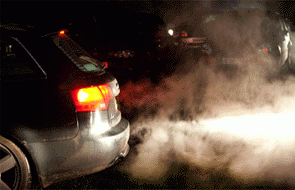
The coalition government is changing the way the public funds roading, by switching from taxing the most widely used fuel for cars, petrol, at the source, to drivers paying based on how much they drive.
Yes, road user charges (RUCs) are coming for all vehicles. Drivers of diesels, heavier than 3500 kilogramme vehicles, electric and plug-in hybrid cars already pay RUCs. Now the proposal is for petrol vehicles to get RUCed as well by 2027.
Universal RUCs will be a deep change on many levels; how deep exactly is hard to say, as there aren't enough details yet from the New Zealand Transport Authority (NZTA) and the government, Steph Kennard of vehicle management startup Bonnet explained.
Bonnet, which Kennard says manages 60,000 vehicles for handling things like automatic RUC purchases for users, is one of several private sector companies talking to NZTA about providing solutions to switching millions of vehicles from excise taxation to distance-driven taxation.
Which will no doubt be quite a mission, but Kennard believes a private company could get a new, expanded RUC system up and running within 18 months, which is a relatively short time frame.
“This is why they’re leaning on the private sector’s tech,” Kennard said.
That private sector tech for a universal RUC system won't receive funding from the government. Instead, private sector tech partners will make money through sharing RUC transaction revenue, Kennard added.
What the revenue split will be remains to be seen. The new system is envisaged to handle road tolls and time-of-use (congestion) charging as well, which could add to the revenue sharing complexity if there are existing private sector partners to factor in.
New Zealand isn’t alone in looking at switching from fuel taxes to mileage ones.
New South Wales and Victoria are also evaluating or trialling distance based alternatives to fuel taxes, Kennard said.
Other countries such as the United States and United Kingdom are looking into “mileage-based user fees” or MBUFs, or vehicle-miles travelled (VMT) charges, with pilots underway in California.
Essentially, RUCs represent a big shift from taxing wholesale with a tiny number of collection points, which is friction-free and painless for NZ’s motorists, to a system that’s completely the opposite.
Administration of the existing petrol excise system looks very simple and efficient compared to universal RUCs. There are just a few main fuel importers, Z Energy, BP, Mobil, Gull and Timaru Oil Services, and NZ Customs collects the excise from them.
In comparison, if, say, 2.5 million individual car owners need individual RUC accounts, that's a 500,000-fold increase in administrative collection points. This is before we get into how rental car companies would manage universal RUCs for each of their vehicles, something that might put an end to unlimited mileage offers.
Universal RUCs look set to require substantial infrastructure: customer service centres, account management systems, enforcement that scales to millions of owners, and dispute resolution processes, with private, profit-making companies providing it.
How to preserve privacy with RUCs?
Privacy is a thorny issue with RUCs.
Today’s simple but cumbersome system with paper labels, manual odometer reads, and pre-paid mileage charging is privacy-preserving as it doesn’t collect data on where and when you drive.
Bishop suggested the labels will be replaced by digital records however, and post-pay and monthly billing options would be introduced.
From a socioeconomic perspective, expecting lower-income drivers to stump up $76 per 1000 km plus admin fee on top of petrol costs before they can drive on public roads could be a tough ask, so flexible payment options are a must.
Kennard thinks the new RUC system will have three to four options for drivers to pay the tax, ranging from manual to fully automated.
Again, this would add complexity and cost, and the government could be minded to go with a digital-only solution to streamline RUC management.
“Of course, they could decide to mandate electronic devices that record distance,” Kennard said.
That would entail using automated geodetic location finding with for example global positioning system (GPS) or similar devices in cars.
The notion of being forced to use GPS to be allowed to drive on public roads is likely to be deeply unpopular among vehicle owners who do not trust the government.
Related to this is the ability to claim RUC refunds for when vehicles aren’t used on publicly funded roads. This is already possible today, manually, but owners of millions of additional vehicles potentially being able to claim RUC refunds will be a different kettle of fish for the authorities to deal with.
Fuel efficiency and emissions take a back seat
The elephant in the room is that RUCs as they’re currently configured ignore fuel efficiency and adjunct emissions.
If we were to switch to RUCs as they’re configured today, with $76 per 1000 kilometre charging, they would have the perverse side effect of rewarding less efficient vehicles with a tax break.
An inefficient car that uses 12 litres per 100 km would pay less tax under RUCs than it does with petrol excise. Meanwhile, a more efficient vehicle that uses 6 l/100 km would be penalised with a tax hike of well over 50 per cent.
In reality, the tax break would only offset a small amount of the fuelling cost of the inefficient car. Responsible owners of more efficient vehicles would still come out on top in terms of total fuel costs, despite being slugged with a huge tax increase.
For rural drivers who drive long distances by necessity, and pick fuel-efficient vehicles to keep transport costs down, a RUC-induced tax increase would be particularly difficult to stomach.
For that reason, Kennard believes there will be different RUC price points based on fuel efficiency and emissions.
Current weight bands for RUCs for light passenger vehicles will need to be tweaked as well, Kennard suggested. Currently, that category applies to vehicles heavier than 1000 kg, but weighing less than 3500 kg.
Heavier vehicles cause more road wear than lighter ones, and it's likely that there will be more weight bands with different charging.
The question is, will this penalise battery electric cars which are usually heavier than purely petrol powered ones?
Overall, the move to RUCs should be aligned with broader climate and emissions targets, as these are all linked to car usage and fuel consumption.
The Clean Car policies of the prior government sought to do this, focusing mainly on reducing climate change inducing carbon emissions and the nation’s big bill for importing 1.4 billion litres of petrol a year.
That policy spoke less of reducing other emissions however, especially from diesel cars, which come at a real societal cost. Recent NZTA numbers put the cost to society of noxious vehicle emissions as high as $10.5 billion a year, with more than 2200 adults dying prematurely annually.
Furthermore, vehicle emissions contribute to over 9200 hospital admissions for respiratory and cardiac illnesses, and more than 13,200 cases of childhood asthma, NZTA said.
Reducing emissions seems to have been further de-prioritised however.
The current government has ditched the Clean Car Discount, and Bishop’s ministry is now reviewing the Clean Car Charge to make imports of Japanese used vehicles cheaper for buyers, even those that have poor fuel efficiency and higher emissions levels.
At the same time, the government said it’ll align NZ’s emissions standards with Australia, which means ensuring cars coming into the country are at least Euro 6d compliant. That would have an impact on emissions, but Euro 6d was introduced in 2021, and New Zealand won’t require cars to be compliant with the standard until 2027.
Meanwhile, Europe has the stringent Euro 7 coming into force by November 2026 for new vehicles, and by November 2027 for all cars.
Euro 7 captures non-exhaust emissions such as brake dust and tyre particulates as well, and includes EVs. Incidentally, regenerative braking for the latter vehicle type is excellent for substantially reducing brake dust.
China already has its demanding 6b emissions standards.
However, the US is actively rolling back EPA emissions standards, while Japan remains content with Euro 6-equivalent standards.
Despite this mixed global picture, major vehicle-producing markets such as Europe, and China are moving toward stricter standards, suggesting clean car supply availability for countries wanting to prioritise health outcomes through emissions reduction isn’t going to be an issue.
RUCs are inevitable, but they need to be connected to emissions as well. If we don't factor in the billions of dollars of societal costs and thousands of lives lost into "road user charges", we're heading down the wrong route for the future.
17 Comments
Excellent stuff Juha. I've been railing against this since it was first proposed, while most journos and commentators think it's a good idea and clearly haven't thought through the way it will be implemented on a large scale and the probable privacy implications.
Watch out if you buy a secondhand car once this comes in. I've seen a couple of instances of people not checking the RUCs on a diesel JUC they bought off the side of the road.
It will be great for the Far North though. While their roads are terrible, WOF and rego avoidance is so high that the paying of RUCs on petrol vehicles surely won't happen either - the result being a tax cut for the poor!
Yeah hmm... closer to Auckland, I wonder how well-monitored RUC compliance is on that very EV-dense island a ferry ride away from the city centre? :)
And thanks!
How will classic cars be sorted? I will be refusing to drill and holes to fit electrical stuff.
Plenty of places use electronic tolling devices stuck to inside of windscreen, works fine
Yup great article.
As for gps trackers they can stick that where the sun doesn’t shine.
You already have one in your pocket.
But I can leave that at home. That’s what choice is.
I suspect you’ll get the choice between an automated tracker or purchasing RUCs manually in advance. You will probably choose the tracker eventually.
I already do it manually so that’s unlikely.
You could leave your car home too.....
But you're more likely to take both with you. And unlike your car, your phone is not only following your movement, but learning your behavior and the content of your thoughts.
Then if you actually thought about your use of your phone, how much of that is via choice or compulsion.
Exactly. Privacy is a non-issue in this case.
I suspect when it coms out that phones do listen in to your conversations while in your pocket there will be some great class action law suits in the US around this. We've all had an instance were you talk about something and then that evening you get ads popping up for it, knowing full well you only discussed this on that one occasion.
Around 20% of all NZ vehicles are diesel, so already the RUC system caters for near 1M vehicles. Seems like a none event to scale it up.
So are you thinking scaling up the physical printed labels or scaling up electronic tracking/recording devices?
And if a mix, what percentage mix?
So; likely to be a regulatory regime without real regard for the user's or administrator’s overheads - the latter of which will have to be paid for by the users, anyway - or privacy, given a private sector solution is being looked at.
When have any of those considerations ever stopped bright ideas out of government?

We welcome your comments below. If you are not already registered, please register to comment
Remember we welcome robust, respectful and insightful debate. We don't welcome abusive or defamatory comments and will de-register those repeatedly making such comments. Our current comment policy is here.